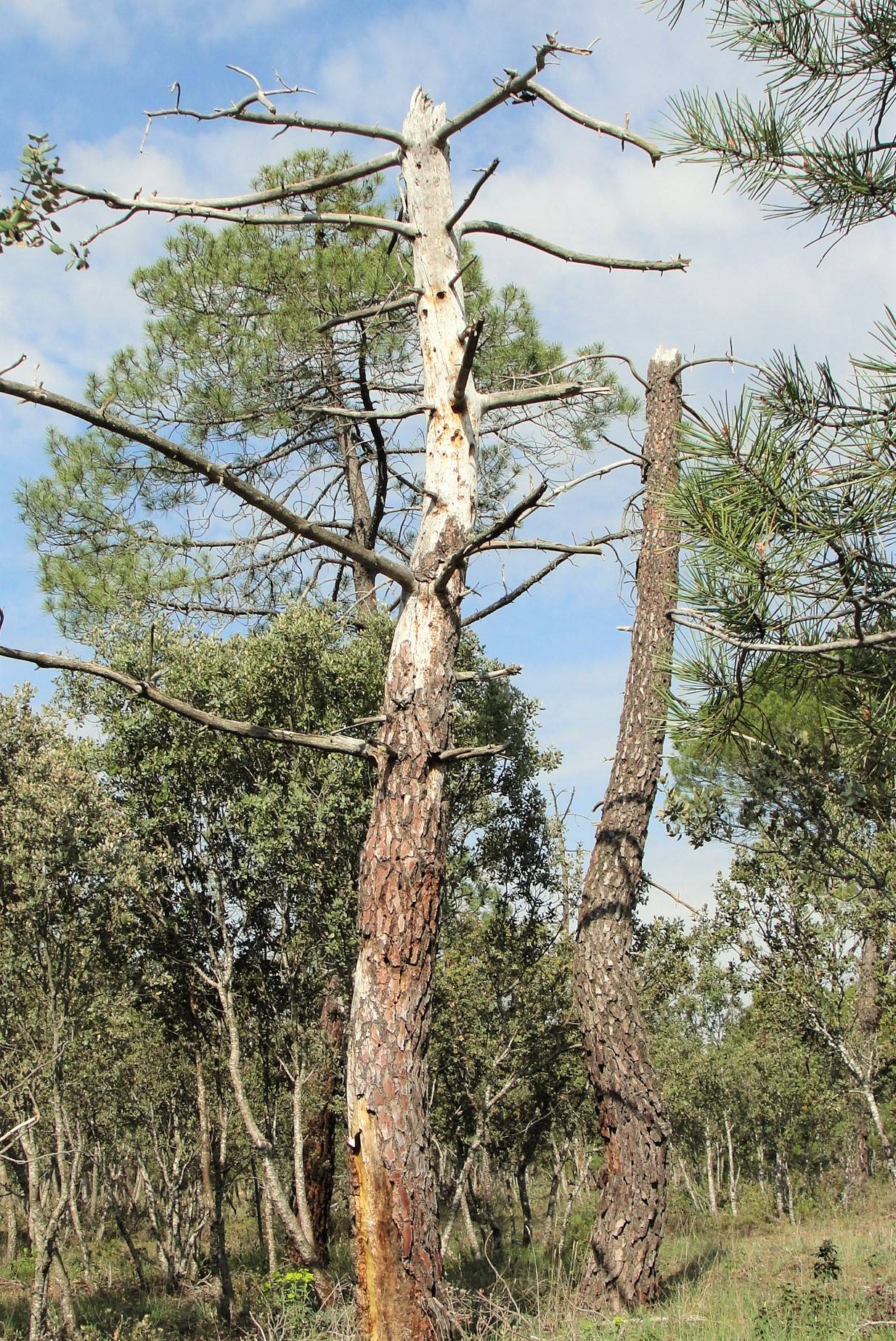
This work seeks to analyze the causes of the decay processes observed in mixed pine forests of Pinus pinaster in Central Spain at its dry limit. This decay process is not exclusive to the area studied. If the causes of this decline are identified, better informed decisions can be made that lead to more efficient and sustainable forest management.
Global change, manifested as increased warming and water stress in the Mediterranean, together with land use legacies (associated with fire, forest management, resin tapping, livestock) have transformed landscapes. The latter affect species dynamics and system sustainability, hence the need to study the interactions between biotic and abiotic factors and their relationships with physiological processes to determine their influence on species decay and mortality. In this case, the phenomenon of Pinus pinaster decline in mixed stands located in the Central System is analyzed at its altitudinal limit (> 700 masl).
The stands studied comprise mixed forest of Pinus pinaster (dominant species), Pinus pinea, Quercus ilex and Juniperus oxycedrus. 45 plots were established along an altitudinal gradient (790-1200 m) with climatic conditions of 518 mm precipitation per year and 12.7 ºC average temperature. The biotic and abiotic factors present were characterized in these plots: fungi, insects and growth. In addition, the plots were classified according to the degree of decay present according to different indicators such as defoliation level, mistletoe infestation, growth decay and lack of regeneration.
The analysis of the plots reveals that biotic factors such as Armillaria mellea are among the factors causing decay of Pinus pinaster at its dry limit. The fact that the species is at its dry limit may contribute to this decay. The main biotic factors, however, are those related to water stress (including mistletoe and weather). Land use legacies also have an impact as predisposition factors (long-term) and instigation factors (short-term). These legacies have important consequences for current species dynamics, including decay, although the precise effect of the historical use of forests on the current distribution of species is still unknown. Understanding the relationships between these factors will help explain the phenomena of decay.
This type of research is highly important with regard to understanding current species dynamics, which will become more accentuated in the coming years under conditions caused by global change in the Mediterranean area. Determining the effect of these factors on forest stands and their future projections is vital to the planning and execution of forest management. Better informed decision making will improve forest management and its results.
Once the biotic, abiotic and anthropogenic factors influencing the decline of the studied stands have been identified, future advances will depend on developing mortality models. These models could help to identify how these factors interact with each other and what actually causes the decay phenomena in certain species. This type of model would represent a turning point in the management of many forest stands in Mediterranean environments.
Guillermo Gea Izquierdo, gea.guillermo@inia.es
(c) INIA

Pinus pinaster decay. (c) Cristina Prieto
